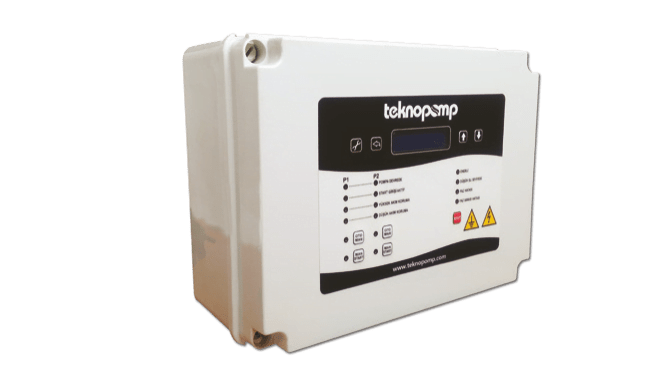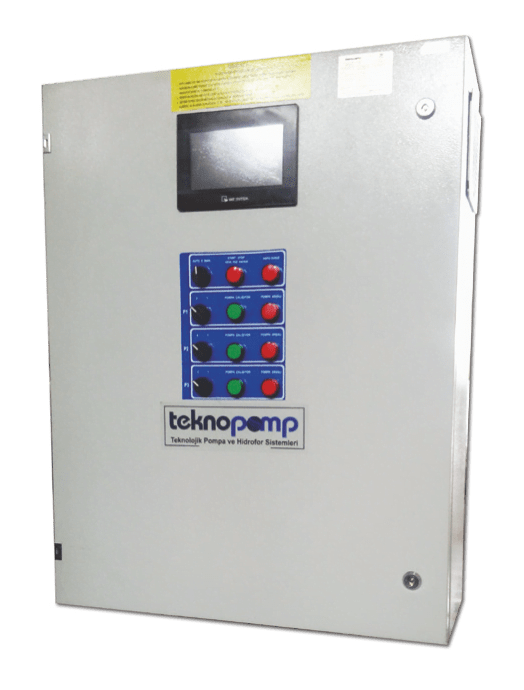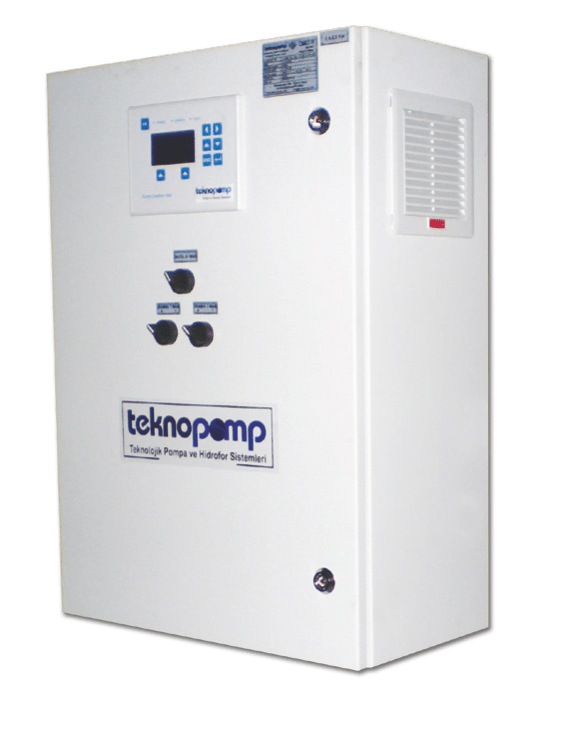Control Panels
Electronic Panel Features
- High current; short-circuit current and under current control
- High voltage protection
- Low voltage protection
- Two phase and phase direction control
- Simultaneous
- Pump entry and exit time setting
- Number of switch protection
- Well mode settings
- Self-test settings
- Pressure transmitter settings
- Factory settings
- Working times of pumps
- Phase-to-phase and phase-neutral voltage reading
- LCD screen
- LED and audible warning
- Turkish-English language option
- Historical alarms (last 15 settings)
Touch Electronic Panel Features
- 7″ Tft LCD screen
- Auto-manual operation
- Failure, running and waiting animation for each pump
- Actual date and time
- Adjustable frequency and time setting between pumps
- PID and time gain settings
- Simultaneous
- High Pressure Protection (Hydrophore)
- Operation with 4-20 mA-0-10 V DC pressure, temperature and flow sensor, real date and time-based fault information
- Two phase and phase direction protection
- Working dry contact information for each pump
- Fault dry contact information for each pump
- Schneider, ABB, Lovato and other switchgear options
- PLC controlled manual panel (ghp) up to four pump booster with thermal magnetic protection (optional)
- ABB brand inverter
- Error recording, graphical curve recording, communication and advanced features on the touch panel
Frequency Controlled Panel Features
- Two 4-20 mA analog input 0-10 V DC output 128*64 pixel blue graphic display
- Thermostat controlled cooling motor
external power supply 24 V DC - Time dependent aging
- PID control (Adjustment possibility)
- High pressure protection
- Low pressure protection (Protection against waterless operation)
- Difference calculation for circulation pump (Automatic output sensor determination so automatic correction even if outlet sensor and inlet sensor are connected incorrectly)
- Auxiliary pump on and off time setting
- Possibility of manual operation with pressure transmitter without using pressure switch in case of driver failure
- Possibility to use a spare sensor in case of sensor failure (In case of sensor failure, the other sensor is activated automatically)
- Possibility of on-off the desired pumps on the screen
- Working hours, date and time setting of individual pumps
- Maximum pump selection (desired working pump number is determined) (All pumps are replaced simultaneously)
- History fault recording system, savings calculation
- Pressure setting and reading on the screen



